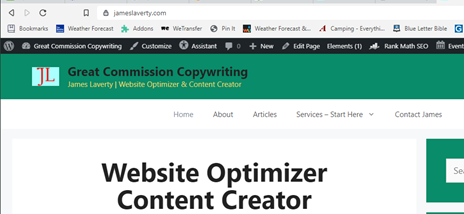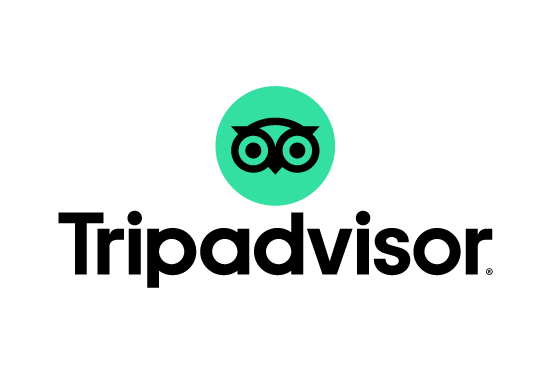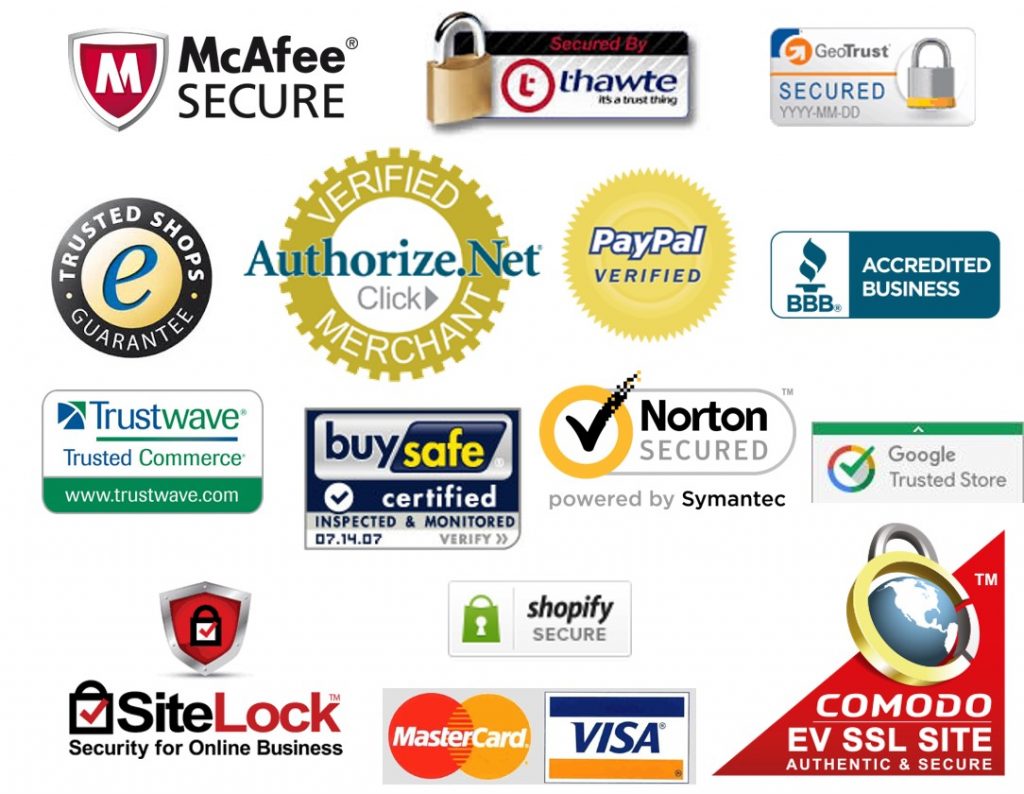Note: This is an example of one type of a Serial Article. This one is three articles, posted at intervals of one week, all related topics but each a stand-alone article. This helps raise awareness when done correctly and promoted. To learn more, Click Here.
Raising Awareness
Article 1 of 3
Raising Awareness, and establishing trust and authority are all key to any business – especially online where you don’t actually meet your clients or members face to face.
Let’s dive into each of these separately, although they are quite connected when put into practice.
So, you want to Raise Awareness of your business, ministry, or church?
Let’s start with the basics. What do we mean by raising awareness?
The SDG Accountability Organization site says, “What is it? Awareness–raising is a process that seeks to inform and educate people about a topic or issue with the intention of influencing their attitudes, behaviors, and beliefs towards the achievement of a defined purpose or goal.”
For business raising awareness is telling our ideal prospects, who are our potential customers, clients, or members that we exist. It’s raising our hand and saying, here I am, and I have a solution to your problem!
Maybe that sounds a little corny, but the truth is, that is exactly what we need to do.
There’s an old movie quote that has become quite popular, “If you build it, they will come.” For the most part, that isn’t true.
We need to raise awareness through promotion, whether free or paid, for people to arrive at our website. There are several ways to do this.
Here are some of the most popular:
- Pay-per-click advertising.
- Facebook ads.
- LinkedIn.
- Other social media promotion.
- Creating a blog (but then you need to promote that)
- Writing articles or blog posts on other sites.
- Networking – Local & online
- Meetup groups.
- Offline advertising & marketing.
- Direct mail.
I could fill a page with ideas, but these are some of the more common. Some are free, which is always a good thing, and some are paid.
Generally, but not always you will get a quicker response with targeted, paid advertising. But as soon as you stop paying for ads, the flow slows down and eventually stops.
Depending on your business, when you promote on social media, for example, your results will vary. You may get a flood of traffic or you may hear the crickets. There are too many variables to cover this topic in this article.
A couple of my favorite types of promotion have to do with networking. LinkedIn, local networking groups, BNI, and Meetup groups, are a few types. You get to meet people face to face or on LinkedIn you can connect with people one-on-one using the messaging feature.
The bottom line is – it’s about building relationships and connecting with your audience.

You can be more personal and answer questions on posts on LinkedIn, which hopefully will lead to a customer or a referral. I have a whole article just on the benefits and how to use LinkedIn. I’ll post it soon. Look for it on the Articles Page of this website.
In my humble opinion, there is no better way to promote than networking.
That said, it depends on your business. You may want to reach the masses with big promotions, and that’s okay.
Of course, you can promote your business, product, or service on whatever social media platforms you are affiliated with. This can be free or paid, usually a combination of the two. You already have followers, friends, and acquaintances that could very well be interested in what you have to offer.
If you already have a blog with a following, the same things apply as to social media. You have a built-in audience. The challenge with starting a new blog to promote a new business or idea is that you will have to promote the blog too.
But it is a great long-term strategy that endures once functioning and a great idea IF you will be consistent at writing. You need to write weekly, bi-weekly, or monthly for at least a year or as long as your business is operating. If you can’t commit to writing for the long-term, then either don’t do it or hire a professional to do it – a copywriter of course.
Organic Traffic is the Best Option
I’m not covering the whole list of ideas from above. But one item I did not put on the list, and I believe it is a must for every business is Organic Traffic that comes through proper SEO, content, and other website strategies.
Well, there is one item on the list that is a part of organic traffic – articles and blog posts.
What is organic traffic and how does it work?
Organic traffic is when someone lands on your website because of unpaid search results. In other words, your website shows up on the first page of a SERP (search engine results page).
The key to showing up organically, versus paid ads, is the content and SEO (Search Engine Optimization) on your page. When I say SEO, it’s much more than keywords or keyword phrases. When your website shows up on the SERP, what does that little blurb say? This is called the “meta description”. How is the title listed? Are they random or optimized?
Not wanting to be too technical, but these are just a couple of the “behind the scenes” kinds of questions we look at when optimizing a website.
Content is also important.
Once you get someone to click on your site, does it appeal to the visitor? Is it user-friendly so to speak? Would a potential client say, yes this is exactly what I was looking for, or is it confusing and people just click away?
You know what I am talking about if you have ever done your own online search. If something is confusing, or not what the title or headline says it was, often called bait & switch, then people hit the back button or X-out of that page.
To build awareness, your site must look appealing, have copy (the words on the page) that is optimized for people to read, with information that answers the questions that people have, and makes them an offer to opt-in for either more information or to make a purchase.
The copy also needs to be optimized for search engines at the same time.
What to do about it…
If you do not have the gift of optimizing the website or page, and you don’t have the skill to write persuasive copy that is of interest to site visitors, then you should consider hiring a copywriter.
What is a copywriter you ask? It’s a person who writes copy. Copy is the words, the story, the method of communication. The difference between a writer and a copywriter is not much. In fact, a copywriter is a writer… but a copywriter is someone who generally writes marketing pieces, from simple ads to web content, long and short-form sales letters, brochures, emails, blogs, articles, etc., etc. The list is long.

I have chosen a niche within the copywriting industry, which you can check out on this website. I don’t do everything. I have specialized in the services I offer, so I can be good at a few things, rather than mediocre at a lot of things.
Even the people I serve are in specific industries so I can get really good at understanding those clients and their customers in my chosen area. Am I capable of doing projects not listed? Sure, and if I have a client that wants that done, I will do it if I am capable.
I am a Website Optimizer and will help build awareness through several product services I offer. I’ve studied how to build awareness of websites, and once visitors arrive, I help to establish trust and authority of that website.
This article is one way I use to build awareness. This is an example of what I can do for you. There are two more parts to this article that will come out shortly. Namely, Trust and Authority.
Establishing Trust
Article 2 of 3
13 Ways of Establishing Trust on Your Website
Establishing trust on your website is as important as your business or ministry itself. It is the first impression that an internet searcher is going to see and experience. That is your potential customer, client, supporter, or member.
You may be the most honest person and company or ministry out there… but if your website does not convey that message of trust, you may lose that person forever.
So why is trust important? Because people buy from people, companies, and websites that they know, like, and trust, to quote a famous line in sales.
The purpose of this article is to show you how to build trust on your website. Whether you do it yourself or hire a trustworthy person to do that is up to you. The important message I would like to convey is one of establishing trust.
Okay, let’s dive into the methodology…
1. A clean Modern Website
If you have been around a while and your website is outdated, it was built at a time when other practices were used… it’s time to update the site. Not all older sites were mobile-friendly, which is critical today since a large percentage of searches are done from mobile devices. New site designs should all be mobile-friendly.
Many business owners fail to realize the impact that their website design has on trust. The look of your site, clean, uncluttered, easy navigation, and just pleasant to look at all combined will be the first impression. If it fails, people will simply hit the back button.
2. Content
There is a common thought among those that add content to sites, be it the business owner, the technical people, etc. That is just write something simple, as long as it explains our product or service, that’s good enough.
I heard a quote recently: “Good Enough is the Enemy of Great!”
A copywriter is trained in the nuances of persuasive writing. There is an art to writing for both the reader and at the same time using good search engine optimization practices. It’s just something to think about, and now I will explain the keys of good content.
All content should be customer-centric. You want to educate your reader, rather than just selling. You do need to have a call to action, but you don’t want to sound salesy.
In order to earn the trust of your audience, you should be willing to help them at whatever level of intent they are at. By Intent I mean someone is either in research mode, or comparing products or services, possibly ready to buy, or they have bought and are looking for support.
Offer content that shows you to be a thought leader and even a trendsetter in your field. What are the hot topics in your industry? Be aware of what’s new and use current events when planning your web content. Especially articles, newsletters, and blogs.
Who is your ideal customer? Your target audience? Your content can be written as a story of a character similar to your typical customer, with their pain point and then the solution you or your company provided. This is when it is really good to know who your ideal customer is. We call this a customer persona.
This way when the person reading can put themselves in the story and see how your product or service can help them… well, they will start trusting you and look to you for their solution.
[link to persona product] Having a customer persona profile completed to discover who your audience is, is a worthwhile investment. Depending on your business or ministry you may have more than one persona, and that’s okay.
Google, along with SEO copywriters, know the power of well-written, high-quality content. That is content that is conversational, valuable, and helpful to the reader. Written for the reader with current SEO practices applied.
A well-designed website with well-written content is a complete package for converting site visitors. This will give the searcher plenty of reason to trust you, staying on your site rather than looking at a competitor.
To summarize, you want customer-centric content, written to your target audience and written to real people, yet with current SEO practices included.
The next few points are short, yet no less important. Think of building trust like buying a pool…
Once you decided on what type of pool you want, that’s not the end. You need a pump and filter, a place to house your pump, the hoses, all the accessories to maintain your pool clean, chemicals to keep it sanitized, and the proper pH balance, a ladder, a fence around the pool for protection, and so on.
So it is with content on your site. More on that towards the end.
3. HTTPS – Secure Site
Check to see if your website is HTTPS or just HTTP and be sure the little padlock is showing secure (locked). If it is not, check with your host provider or your IT people to get that secure.

This is especially important if you take online orders or ask for sensitive information on your site.
4. Smile 😊 Show Your Face
Let your audience know who they are buying from. If you are a solopreneur, then put a good headshot on your site. You can even have a picture of you in action doing what you do best.
Make it real. Make it believable.
If you have a larger company, show your team’s faces. Especially those with who the public will interact.

If you do outside sales, and a customer can see what the salesperson who will show up at their door looks like ahead of time, that is reassuring and builds trust.
Basically, don’t hide from your audience. Be bold and show your pearly whites!
5. Testimonials and Reviews
Testimonies of satisfied customers sprinkled throughout your website will certainly build trust and authority (next week’s topic in this series). The best testimonials are those hosted on a third-party site, so people know they are real. They can be embedded on your site to show off your expertise.


On any reviews you get, especially on public platforms, you should always respond whether it is a good review or a bad one. Your timely response is important not just for that customer, but for everyone else who will see those reviews.
Ask people to review your business on whatever site you get the most exposure on. The more reviews the better. It also gives the owner or management a good look into how their staff is performing.
Case Studies are another type of testimony and review if they make sense for your business.
6. Social Media
In a brick-and-mortar business, people enter in and see the products or a desk with a person as in the case of services, therefore they have a reference point – which builds first impression trust, then the service they receive will hopefully build another layer of trust.
Online, it’s much harder. So, when you connect your site to other trusted sites, think about social media, blog and news sites, and other industry connections, it can build confidence in your audience.
If you happen to have a good following on certain platforms, that’s even better. Say between 5000 to 10,000 people is excellent. But even if you have only a couple hundred to start, you can build on that.
The point is, if you are on platforms that reach your intended audience, then you will do well. I’m purposely not naming social media sites here, as the landscape is changing, and more options are becoming available.
Okay, I will name one – LinkedIn. A good LinkedIn business profile is different from other social media. Your LinkedIn profile can be as important as your website. And the two should be connected and say the same things.
7. Contact Info
Don’t hide your contact info! That may sound ridiculous, but it happens all the time. Recently I was doing research for web developers/site creators and more than half the sites I went to had no phone number, no email, and only these long forms to fill out with information that was not pertinent to what I was looking for.
I myself some years ago decided not to put my email address on my site cause it just caused me to get spammed all the more. So I had a simple form that I would receive as an email and I could then respond to all legitimate requests. Today they have programs that spam web-forms. I get tons of spam from different sites I own.
The solution? They’ll always be those who will spam and filters will hopefully get more sophisticated to eliminate some of it. Sorry for the rant… but my point is this.
I now put my email as name(at)url.com as the programs or algorithms don’t pick that up.
Contact information should include: full name, phone number, email, mailing or physical address, and even a map if you have a place to visit. If you have several departments – put contact info for each of the main players with extension numbers and emails.
Besides the obvious Contact Page – place a phone number at the top of every page.
The bottom line here is don’t play hide-and-seek with your audience.
8. Trust Seals
This is a controversial subject. Some “trust Seals” are never even considered when you look at the polls and surveys. Except when it comes to a page where customers enter the credit card info.

This chart came from CXL with an excellent article on Trust Seals.
Click Here to Read It
Some things that help to build trust are:
- SSL Certificate (HTTPS – which I mentioned above)
- Posted Privacy Policy
- Clear refund policy or guarantee (when applicable)
- Transparency in ads and affiliate links
- Spam Free policy for email sign-ups.
Let your visitors know that you aren’t hiding anything and that you will keep their information safe and secure.
9. Limit Distractions
Some sites when you click on them have flashing lights, music, or voice-over playing, a variety of bright colors each vying for your attention… I don’t know about you, but when I see that I can’t click out quick enough.
Remove the clutter!!
Your site should be customer-centric. Content should be written with your customer in focus – front and center.
Some people believe they can make more money by placing ads on their site. The truth is, if your content is well-written you will sell more of your own products or services by focusing on what you do best.
Limit distractions and skip the ads unless it is something relevant to your own business or another business you own. But make it unintrusive.
10. Technical Side – Improve Load Time
This is a more technical side to the website and has to do with the amount of content and type of content on each page. Load time is measured in milliseconds. If a page just “circles around and around”, most people just click away.
How frustrating that is.
Images, pictures, charts, and videos can all be large file sizes slowing down the load time.
I used to be in print advertising and we required a minimum of 300 dpi (dots per inch) in any photo or artwork we would use.
On the internet, you want to use a 72 dpi or a maximum of 96 dpi. You can use a larger size file and simply reduce the size with good photo editing software – just be sure to “save as” to make a copy. You may want to print the large file someday.
Video is also an issue with file size. So it depends on how it is loaded. The best way is to place an image or screenshot of the video and make it clickable (adding a link to the image). It should always be hosted on another platform rather than directly on your site.
It can still play on your website if you choose, but if it goes to YouTube, Vimeo, or somewhere else you want to be sure it opens in a new tab, so your site is still open in their browser.
If that’s all confusing, the techy types will get that done right for you.
11. Links – Internal and External
Internal links are those that connect to other pages on your own website. And this is good to show the relationship between pages as well as articles and blogs linking to relevant content on the site.
At the bottom of this article, you will find a link to connect with me.
External links should be from trusted sites. They could be news reports written about you, other blogs or articles mentioning your site or products, and even ads you run link back to your site. If you host a video or better yet if someone else mentions you in a video, they will have a link to a page on your site.
External links are also called backlinks.
One word of caution. Do NOT pay someone to get 1000 or whatever number of backlinks to your website. That’s considered a black-hat technique frowned upon by major search engines and will do you more harm than good.
12. Brand Consistency
Branding is obviously important to your business. Big corporations spend big money on branding. But as a small business, you don’t have to spend extra money on branding. Just be consistent in everything you do both online and offline.
Branding has to do with the fonts, the colors you use, images, the style of writing, and your messages like tag lines or mottos. It should be consistent. Inconsistency signals a change in personality which can break that trust.
13. Maintain Your Site Up to Date
It would be a shame to invest time and money in creating a great site, then just let it sit unattended.
One of the algorithms Google uses is how current content is. Sites that are regularly updated will not only be trusted more in the sight of your audience, but search engines will recognize it giving more authority to the site.
Each of your pages, articles even blog posts in some instances should be updated and refreshed every 3 to 12 months. Use a calendar just for your website. If you have a writer who takes care of that, he or she will take care of those things.
Also, if you have regular articles, as I do, posted to your site or you have a blog on your site, tell people when to look for new content and stick to it. The timeframe isn’t as important as sticking to what you say.
A blog can be daily, 3-times per week, but you should post a minimum of once per week. That said you could do bi-weekly or monthly. There are several factors that go into that decision like what you have to sell, how much is there to write about your industry or related topics, what your audience will tolerate, and so on.
I used to own a retail shop with over 400 items listed on my website. Through testing, I concluded that bi-weekly worked best. I got the least number of unsubscribes, I interacted with my clients, and they bought products every time I sent a blog out. I also had an average of a 38% open rate. If you don’t know, that’s high.
Funny story, I didn’t know that was high at the time. I was at a marketing meeting, a Glazier Kennedy Insider Circle meeting, and was talking to some of the folks there. That’s when those copywriters and marketers wanted to know what I was doing because my open rate was so high. They said 15-20% open rate is doing really good. WOW!
That was years ago, but I’ve continued to perfect my craft now that I write for other companies, not just my own.
In Conclusion
You can see that there are many moving parts to a website and building trust. Everything is a variable. Different techniques and styles will work depending on your business or ministry.
It takes work to build a trustworthy site. Test everything.
You may have read this thinking, “okay, I got this” or you may be overwhelmed and had no idea so much went into a good website.
Maybe you are concerned about how trustworthy your current site is and don’t know where to start. YOU want to at least have a professional opinion or an SEO Audit.
Do you want or need help? I can help you and it starts with a no-obligation, free discovery call.
Click the button below to connect with Jimmy or better yet – give me a call at 719-482-8302.
Remember, an outdated site can put people off. They may not see you as reliable or even caring about the user experience. The last thing you want is to spend time, energy, and money on getting people to your site, then have them disappointed and clicking away.
You don’t want to miss out on business because of your website. Start building trust today.
Take a step of action in the right direction by clicking here to contact me.
Establishing Authority
Article to be published soon
